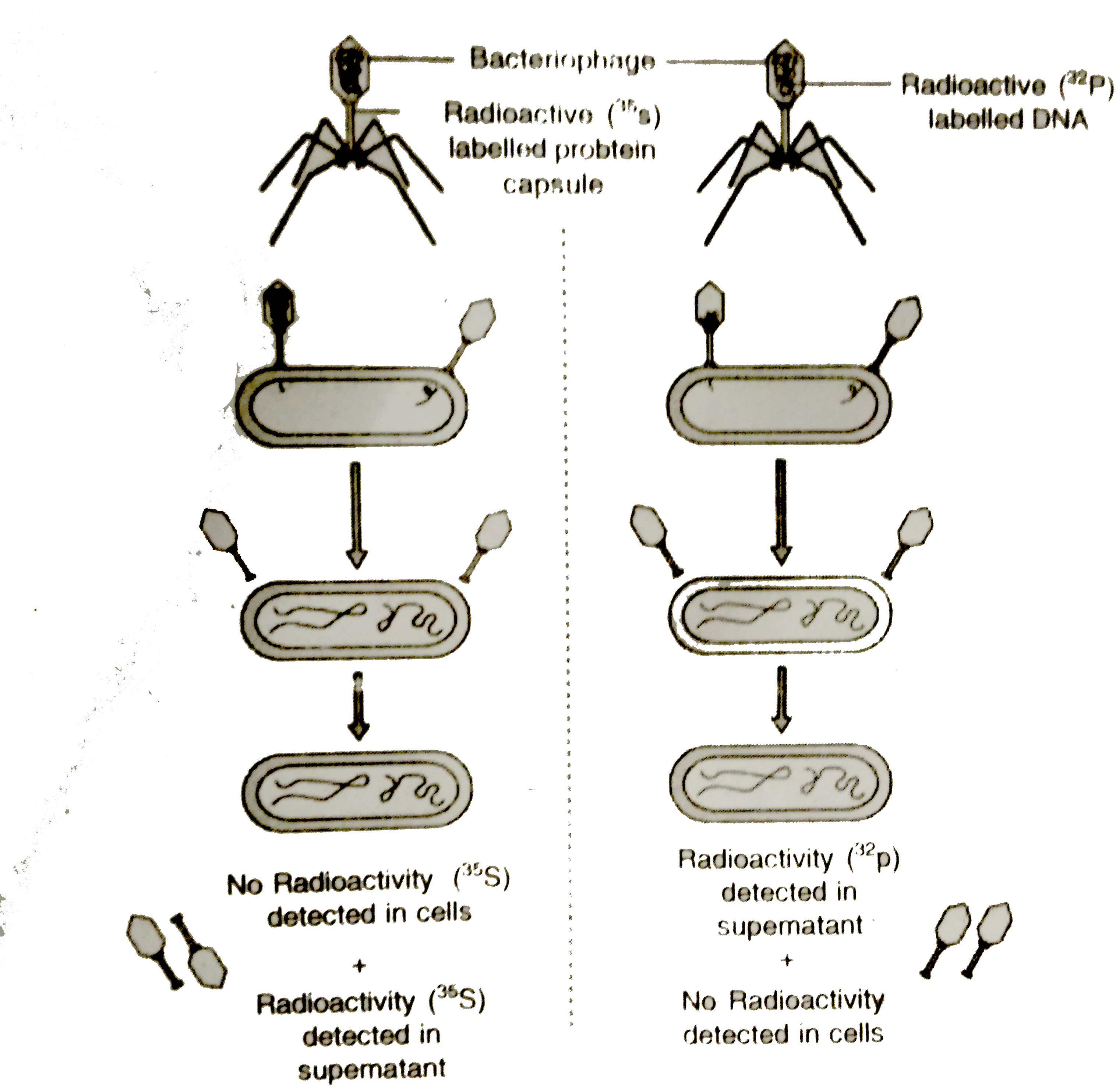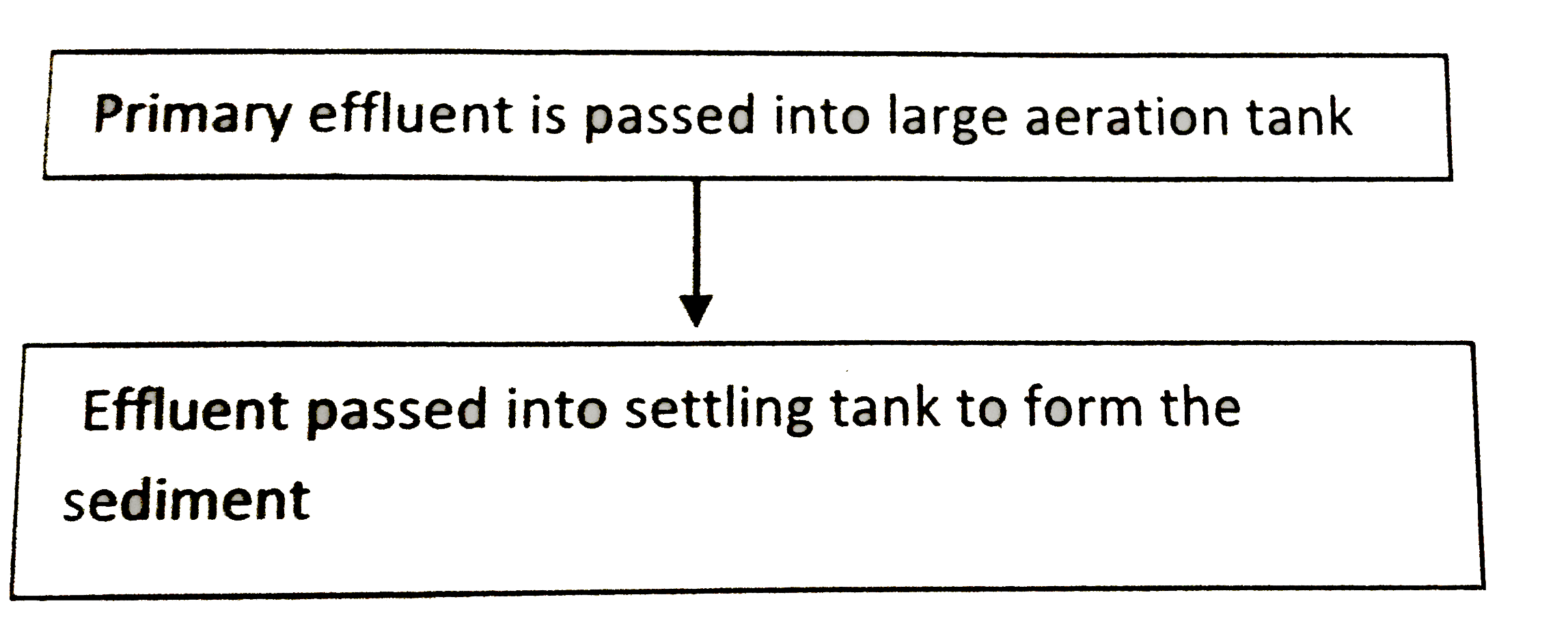(a) Hershey and Chase carried their experiment in three steps : infection, blending, centrifugation. Explain each step.
(b) Write the conclusion and interpretation of the result they obtained.
(a) Hershey and Chase worked with viruses that infect bacteria called bacteriophages.
(i) Infection : Radio active phages were allowed to attach E. coli bacteria.
(ii) Blending : Then, as the infection proceeded, the viral coats were removed from the bacteria by agitating them in the blender.
(iii) Bacteria which was infected with viruses that had radioactive DNA were radioactive, indicating that DNA was the material that passed from the virus to the bacteria. Bacteria that were infected with viruses that had radioactive proteins were not radioactive.
This indicates that proteins did not enter the bacteria from the viruses. DNA is, therefore, the genetic material that is passed from virus to bacteria.

Topper's Solved these Questions
- XII BOARDSBOOK - XII BOARD PREVIOUS YEAR PAPER ENGLISHCHAPTER - XII BOARDSEXERCISE - SECTION-E
6 Videos
- XII BOARDSBOOK - XII BOARD PREVIOUS YEAR PAPER ENGLISHCHAPTER - XII BOARDSEXERCISE - [OUTSIDE DELHI : SET-II] SECTION -A
2 Videos
- XII BOARDSBOOK - XII BOARD PREVIOUS YEAR PAPER ENGLISHCHAPTER - XII BOARDSEXERCISE - OUTSIDE DELHI SET III
8 Videos
- SAMPLE PAPER 2019BOOK - XII BOARD PREVIOUS YEAR PAPER ENGLISHCHAPTER - SAMPLE PAPER 2019EXERCISE - Section E Part B
3 Videos
Similar Questions
Describe the Hershey and Chase experiment. Write the conclusion drawn by the scientists after their experiment.
View SolutionHow did Hershey and Chase prove that DNA is the hereditarymaterial ? Explain their experiment with suitable diagrams.
Observation and Conclusions
View SolutionAnswer the following questions based on Meselson and Stahl s experiment: (a) Write the name of the chemical substance used as a source of nitrogen in the experiment by them. (b) Why did the scientists synthesise the light and the heavy DNA molecules In the organism used in the experiment ? (c) How did the scientists make it possible to distinguish the heavy DNA molecule from the light DNA molecule ? Explain. ((1) Write the conclusion the scientists arrived at after completing the experiment.
View SolutionAnswer the following questions based on Meselson and Stahl's experiment of E. coli :
(a) Write the name of the chemical substance used as the only source of nitrogen in the experiment.
(b) Why did they allow the synthesis of the light and the heavy DNA molecules in the organism ?
(c ) How did they distinguish the heavy DNA molecules from the light DNA molecules? Explain.
(d) Write the conclusion the scientists arrived at, at the end of the experiment.
View SolutionLarge quantities of sewage is generated everyday in cities and towns, which is treated in Sewage Treatment Plants (STPs) to make it less polluted. Given below is the flow diagram of one of the stages of STP.
Observe the given flow diagram and answer the questions accordingly

(a) Why primary effluent is passed into large aeration tanks?
(b) Write the technical term used for the sediment formed? Mention its significance
(c) Explain the final step that results in the formation of biogas in the large tank before the treated effluent is released into water bodies.
View SolutionLet A=[−332−2]andB=[4646], find the matrix AB. Write the conclusion, if any, that you can draw the result obtained.
View Solution(a) Describe the various steps of Griffith's experiment that led to the conclusion of the 'Transforming Principle'.
(b) How did the chemical nature of the 'Transforming Principle' get established?
View Solution(a) Describe the various steps of Griffith's experiment that led to the conclusion of the 'Transforming Principle'.
(b) How did the chemical nature of the 'Transforming Principle' get established ?
View Solution(a) Describe the various steps of Griffith's experiment that led to the conclusion of the 'Transforming Principle'.
(b) How did the chemical nature of the 'Transforming Principle' get established ?
View Solution(a) Describe the various steps of Griffith's experiment that led to the conclusion of the 'Transforming Principle'.
(b) How did the chemical nature of the 'Transforming Principle' get established ?
View Solution
